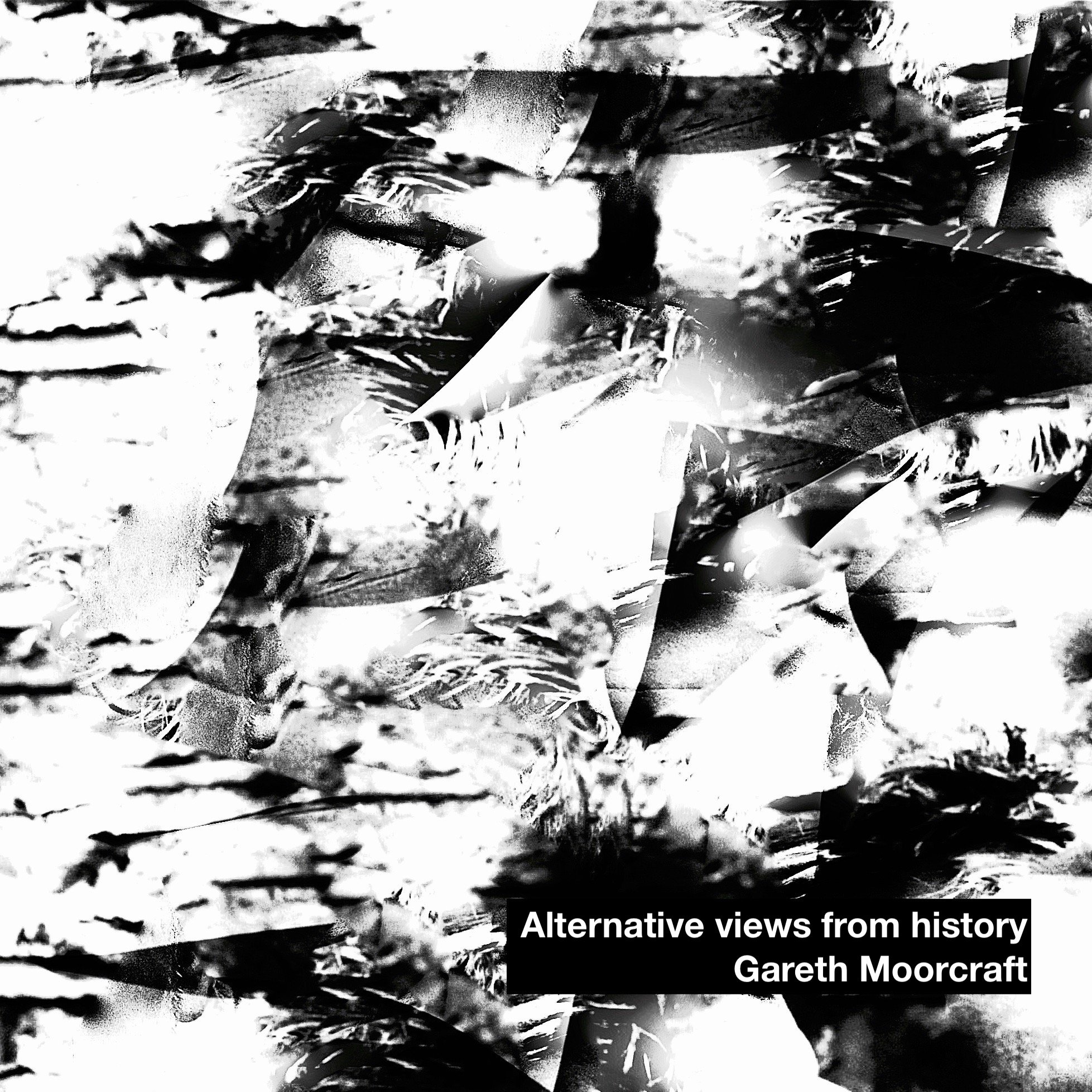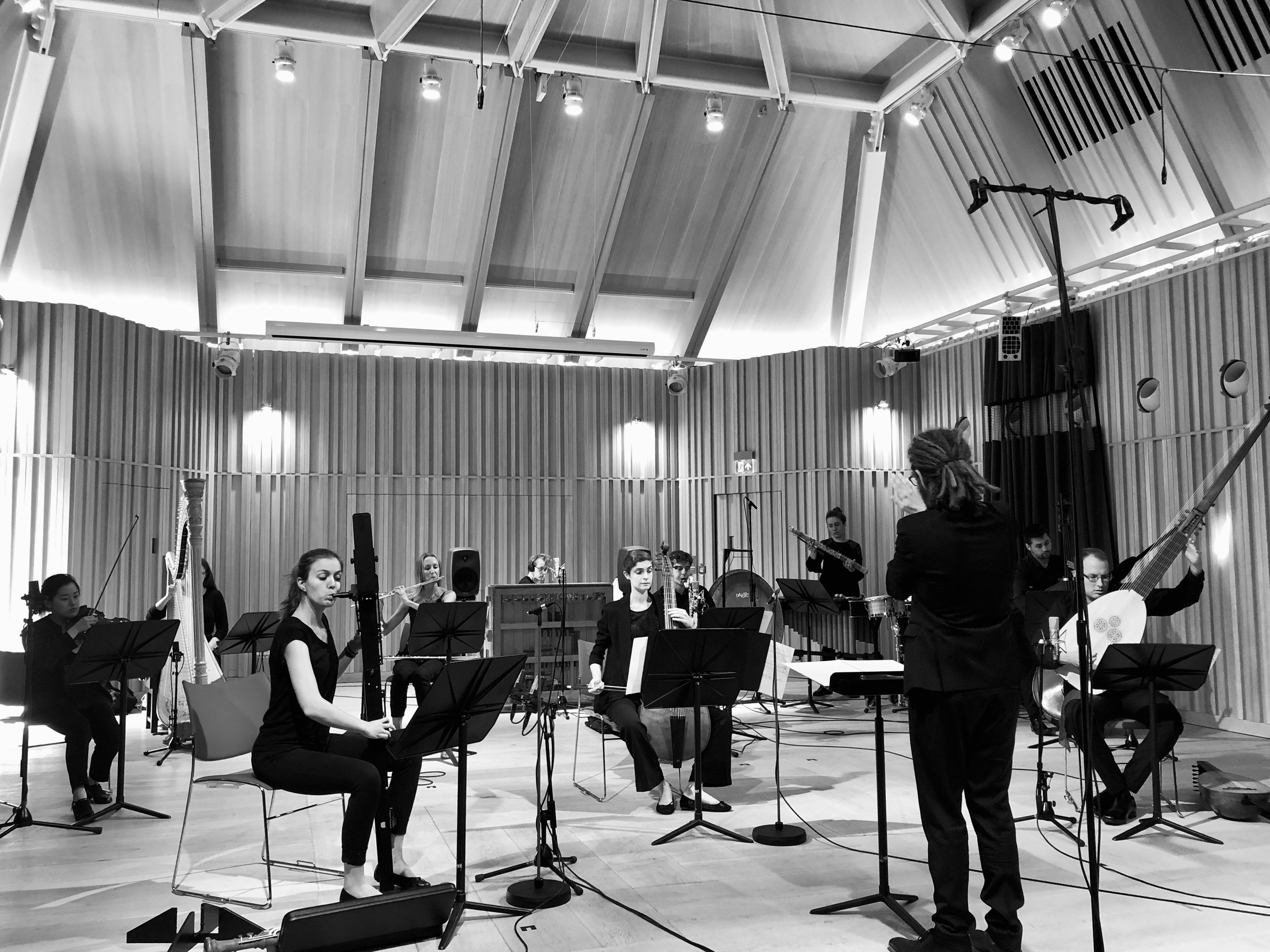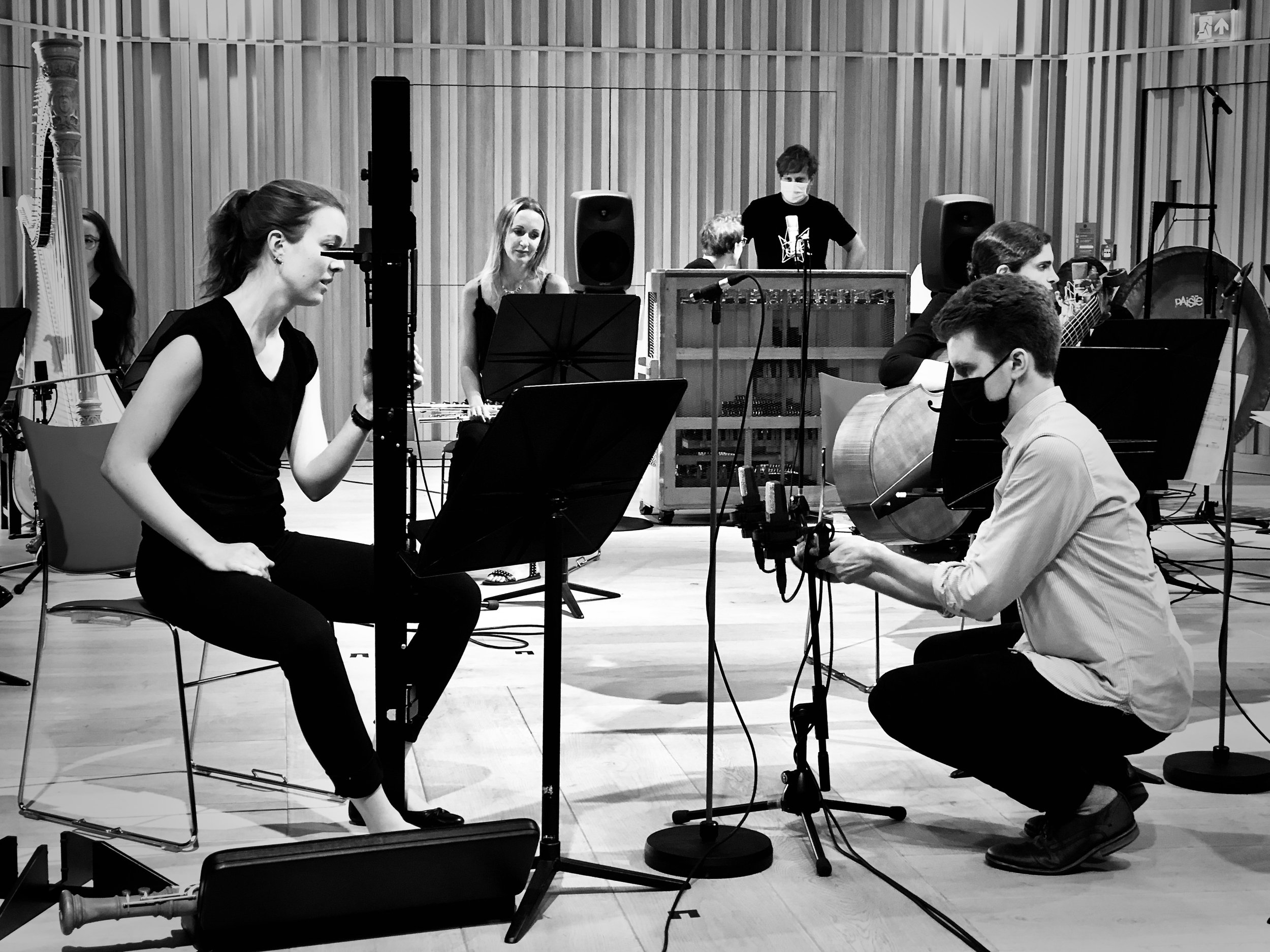Alternative views from history
A suite for recorder, viol, lute, and ensemble (2021)
Tabea Debus (recorder), at a recording session in the Angela Burgess Recital Hall, Royal Academy of Music, London.
Alternative views from history is a suite of arrangements, transcriptions, and free 'recompositions' based on Medieval, Renaissance and Baroque-era models.
The work combines a trio of period instruments - the recorder, viola da Gamba, and lute - with a modern ensemble (fl. cl. perc. celesta (+synth) harp vln. db.). It was composed, workshopped and recorded at the Royal Academy of Music, London, in 2021.
The music was developed in close collaboration with Tabea Debus (recorder), Kate Conway (viol) and Toby Carr (lute), who demonstrated the period instruments so brilliantly in workshops and helped to find the best solutions for my ideas.
All workshops and recordings were conducted by Darren Bloom.

Mov. 4 Caronte’s Dream (After Monteverdi)
Videos for all movements are available here on YouTube
Recordings also available to stream on Spotify and YouTube Music.
Copyright © 2021 Gareth Moorcraft
Recording/Video copyright © 2021 Royal Academy of Music, LondonAbout the work:
Alternative views from history is a suite of six movements, each based on pre-existing historical musical works or fragments.
Sometimes, the ‘borrowed’ historical materials remain clear on the musical surface (e.g. mov. 3 Deaf by Art and mov. 4 Caronte’s Dream); at other times, they are hidden, distorted, or combined with new ideas (e.g. mov. 2 Anonymous Toy and mov. 5 The English Dancing Master (Or, Introvert @ Party).
The work explores the boundaries between arranging, transcribing, and composing, aiming to present ancient musical ideas (and instruments) in new and unusual ways.
More information about the different movements is available in the programme notes below.
All tracks are available to stream on Spotify and YouTube.
Tabea Debus (Rec.) and Clare Findlater (Fl.)
Listen:
Mov. 1 - Prologue - freely develops melodies composed by troubadour Berenguier de Palazol and trobairitz Comtessa de Dia. The ancient melodies are first presented in a simplified and stripped-back way; as the movement progresses, the lines become increasingly decorative and intertwined. In this movement, the modern ensemble is allowed to emerge out of the sound of the period instruments. The solo part is written for bass recorder.
Mov. 2 - Anonymous Toy - references and develops an anonymous composition called 'A Toy' from the Fitzwilliam Virginal Book. This is mostly hidden in the early passages, but it emerges increasingly clearly towards the end. A stylistically ‘suitable’ harmonic accompaniment for the tune only arrives very briefly at the end of the movement, as a playful conclusion.
Mov. 3 - Deaf by Art (After John Dowland) - begins as a direct arrangement of John Dowland's song Praise Blindness, Eyes. The material is passed between the historical and modern parts of the ensemble, before a stretched and distorted version of the tune leads the music into a very different soundworld.
Mov. 4 - Caronte’s Dream (After Monteverdi) — combines and develops sections from Monteverdi's Orfeo (primarily Possente spirito, and Tu se morta). The Paetzold contrabass recorder is used to mimic, exaggerate and distort the tendencies of vocal delivery in Monteverdi's style. This was developed in close collaboration with recorder soloist Tabea Debus; in the early stages, we attempted several different approaches to capturing and distorting this style, playing directly from Monteverdi’s scores. These early improvisations were recorded, transcribed, and gradually refined into the final version.
Mov. 5 - The English Dancing Master (Or, Introvert @ Party) - takes materials from three traditional tunes in John Playford's ‘The English Dancing Master’ (1651), a dancing manual containing tunes and instructions for English country dances. (The three referenced were Nobody’s Jigg, Opera (Or, The Ape’s Dance), and Love lies a’bleeding). The materials are processed (and distorted) through a new series of compositional rules, creating short circular melodies which are arranged in a symmetrical form, often ‘hocketing’ between instruments.
Mov. 6 - Postlude (Brian’s Halo) is based on the melody from Johannes Ockeghem's Deo Gratias (originally a canon for 36 voices). The material is still presented as a canon, but it now appears in different keys and tempos simultaneously. An isorhythm allows the parts to gradually drift out of sync and fade away.
Full score available on request; please use the contact page.Opera (or, The Ape’s Dance) from John Playford’s The English Dancing Master (first published in 1651)



Conductor:
Ensemble:
Recorders: Tabea Debus
Viola da Gamba: Kate Conway
Lute/Theorbo: Toby Carr
Flute: Clare Findlater
Clarinet: James Gilbert
Percussion: Fran Lombardelli
Keyboards: Joseph Havlat
Harp: Mared Pugh Evans
Violin: Naori Takahashi
Double bass: Alexander Jones
Recording team:
Barra Liddy
Oliver Glynn
Cal Fitzgerald




